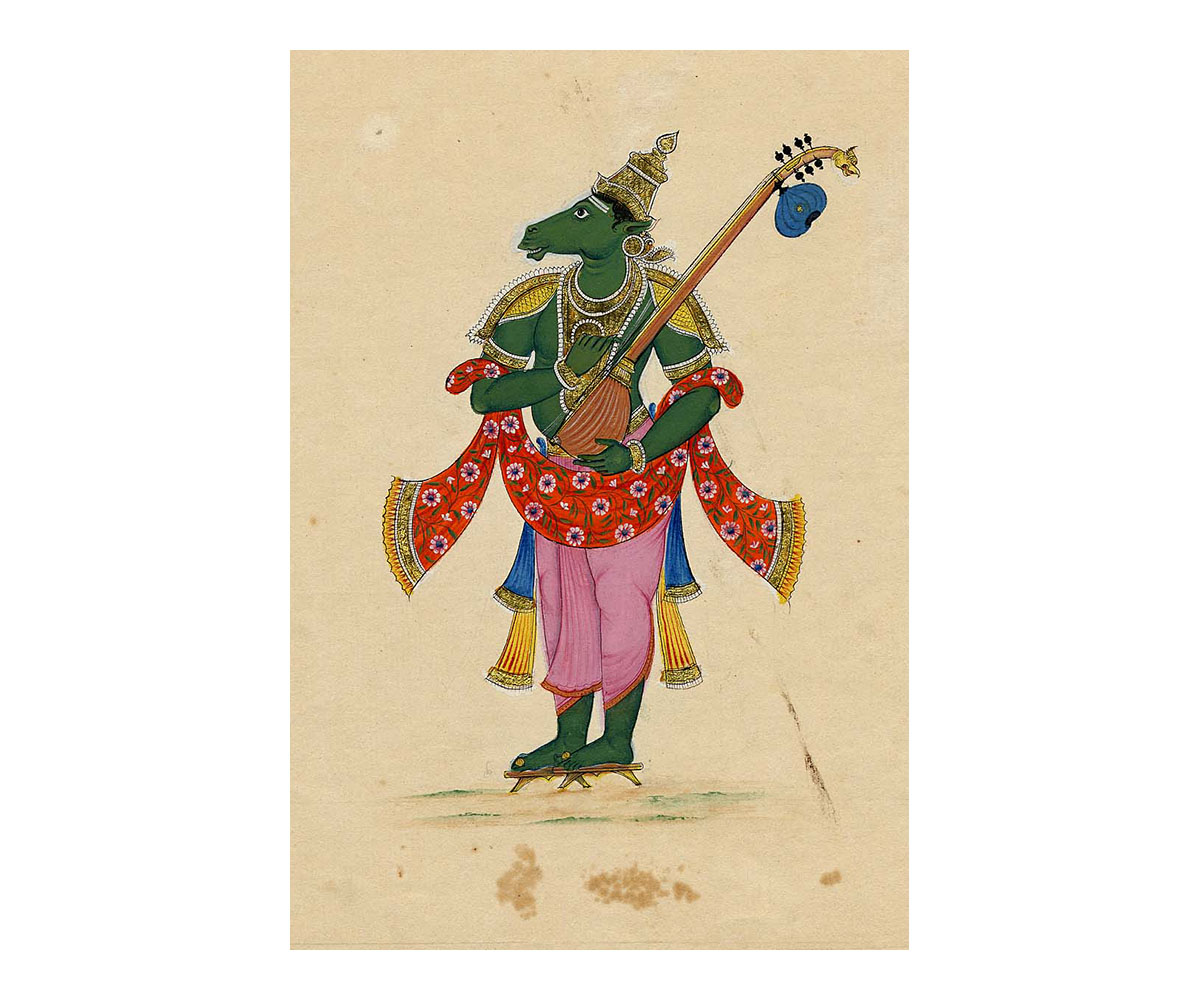ARTICLE
Angavastram
An unstitched, rectangular piece of fabric, the angavastram is a garment worn over the torso and shoulder by men in parts of South India and Maharashtra. The word angavastram literally translates to “cloth for the body.” Typically paired with a dhoti or kurta, it is considered to be a garment of religious significance within Hindu culture. Known variously as dupatta, pacheli, pichodi, uparanu, shalya and upavastra, the angavastram is usually made of handspun cotton, though when worn for religious rituals, it is made of silk.
The angavastram is considered to have evolved from the uttariya, which was also worn around the shoulders in the manner of a shawl or around the waist like a kamarband, as seen in the sculptures at Sanchi and Amaravati.
The modern angavastram is mostly undyed and white or cream-coloured, with either a single or double stripe of colour on the edge or a gold zari border. In parts of India, the angavastram is worn by the groom during weddings, with the drape varying regionally. In southern India, the angavastram is often the only garment worn on the upper body, with a dhoti as the lower garment, but it may also be worn over a shirt. In Bengal, the angavastram is worn over a kurta and is loosely draped on the shoulders like a blanket or a shawl.
Bibliography
Our website is currently undergoing maintenance and re-design, due to which we have had to take down some of our bibliographies. While these will be re-published shortly, you can request references for specific articles by writing to hellomapacademy@map-india.org.








